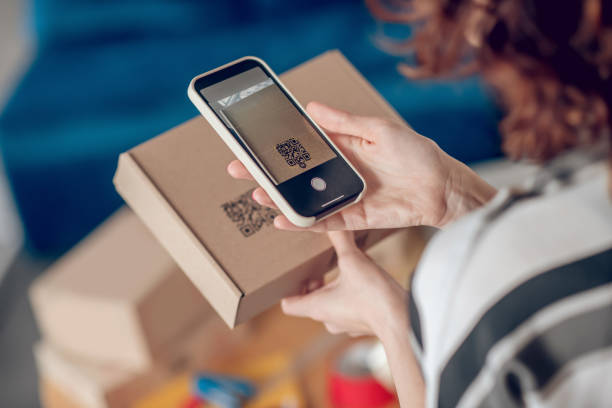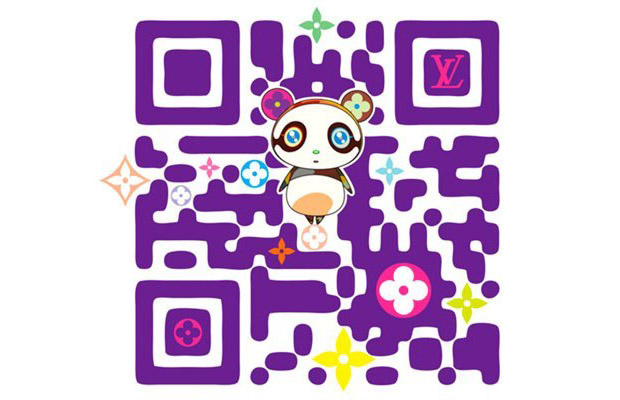QR codes in fashion have made a substantial comeback since the pandemic. For tech first created by automotive components company DENSO WAVE in 1994, they have once again soared in popularity post-pandemic, as fashion lovers return to physical stores and research products on the spot.
In case you haven’t heard, a QR code is a black-and-white squared pattern that can be read via smartphone cameras. QR, which stands for ‘Quick Response’ coding, has become widely used among the world’s top fashion brands to boost consumer engagement and increase sales and loyalty. First popular in Japan, their popularity soared during the pandemic due to Apple including a built-in camera in their latest software offerings.
According to Insider Intelligence, the number of US smartphone users scanning a QR code looks set to increase to 99.5 million in 2025. In addition, findings from RetailDive reveal that consumer behaviour has shifted, with nearly 60% of shoppers searching for product information and prices while using their mobile phones in stores.
It’s not just fashion experiencing QR code mania – the funky black and white images can be found almost everywhere, from supermarkets to concert tickets to restaurant menus. Fashion tech lovers we are, we took a look at some of the biggest brands using QR codes, helping consumers try before they buy.
One of the biggest adopters of technology and QR codes used in the fashion world, in 2022 alone, Zara spent 2.7 billion euros on combining fashion and innovation. Through Zara’s QR codes, shoppers can automatically identify themselves at shop tills and request e-receipts. They can also check in to physical stores and identify products and sizes available for pickup nearby in just 30 minutes. What’s even better is that customers can skip the queue using QR codes and book fitting rooms through the retailer’s app.
Encouraging buyers to scan QR codes to verify the authenticity of their jeans and other clothing, they were first introduced in 2018 to help curb the production of counterfeit denim goods. Taking a different slant on QR code use, Diesel has incorporated them into its clothes labels. Diesel jeans fans need to scan the labels or enter the code on the label into www.certilogo.com to ensure they have purchased the real deal.
Another major brand using codes to decipher genuine articles from fraudulent copies is Ralph Lauren. The retailer, which has introduced digital tags to its clothing, enables consumers to scan QR codes next to product labels to ensure authenticity. Ralph Lauren first embraced QR code technology in 2019 and is gradually phasing it into all its products, starting with the Polo brand. What gives the brand an edge, however, is its ability to provide customers with personalized information and savvy styling tips for when codes are scanned.


When it comes to codes and labelling, fashion giant Louis Vuitton is one of the most creative around. Thinking outside the coding box, the luxury designer produced QR codes in conjunction with Japanese artist Takashi Murakami. This saw them redesign their entire coding campaign through customization, personalizing it and adding patterns alongside the ever-famous LV logo. Later shifting to using product identification technology, Louis Vuitton still uses integrated visual QR codes as part of their advertising campaigns.
Sports apparel giant Nike is one of the biggest fashion brands to use QR codes across all aspects of the business. The company enables shoppers to scan and record both mannequins and apparel so they can see them, try them on and track them down to their nearest store. What takes their tech usage to another level, however, is the fact that the Nike marketing team can easily track trends by identifying which mannequin gets the most attention by analyzing the data collected. What’s even cooler is that shoppers can turn their smartphones into Nike scanners to help them design their perfect, personalized Nike runner should they wish.
Making clever use of scannable codes has become the name of the game for lingerie retailer Victoria’s Secret, who have been using them since 2012. The brand has failed to keep quiet about how it ‘seduces’ consumers into scanning QR codes to tempt shoppers to learn more about its products and fashion trends. One of their biggest campaigns to date using black and white technology is their “Sexier than Skin” campaign which features models with codes positioned cleverly over different body parts. These were then scanned by consumers who were led to the website to read details of the latest Victoria’s Secret looks. Hailed as one of the most creative and provocative QR code mobile marketing campaigns to date, it shows that the capabilities of QR codes are quite cheekily endless.

